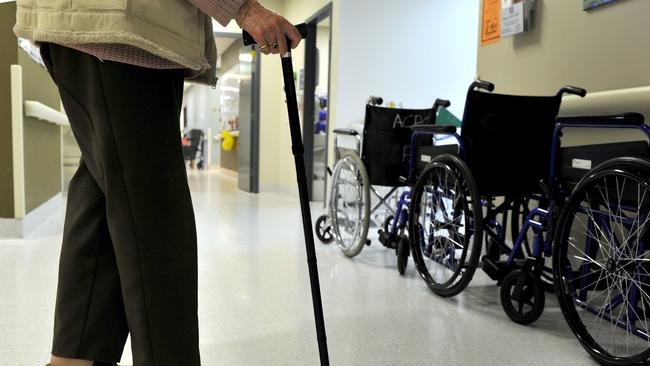Up to four in 10 nursing home residents in Australia suffer abuse, aged care royal commission report finds
Up to 40 per cent of nursing home residents in Australia are experiencing abuse, a rate that is among the highest in the world, a new study has revealed.

Up to 40 per cent of nursing home residents in Australia are experiencing abuse — in the form of emotional or physical attacks or neglect — a rate that is among the highest in the world, a new study has revealed.
Experts say the proportion would be even higher if abuse by fellow residents and financial and sexual abuse were included.
The new report, published by the aged-care royal commission, has used survey data from a poll by the National Ageing Research Institute of 391 nursing home residents in 67 facilities between January and March to uncover the high levels of abuse.
“The prevalence of elder abuse in Australian residential care is estimated to be 39.2 per cent,” the research paper states. “This … is closer to the upper range identified in international studies.”
It identifies neglect as the most prevalent form of abuse, experienced by an estimated 31 per cent of residents.
“(Neglect) includes people who reported concerns about how they are helped to shower, eat, toilet, get around, groom and/or use continence aids; concerns about how medication is managed, wounds are looked after, catheters are used and/or pain is managed,” it states.
Next highest in terms of prevalence was emotional/psychological abuse at an estimated 22.6 per cent.
“This includes people who reported feeling forced to be dependent on staff, treated like a child, forced to wear continence pads, being shouted at by staff, and/or not having their specific care needs thought about or listened to,” the report reveals.
About one in 20 were estimated to have suffered physical abuse, including being restrained, not being allowed out of their bed/chair/room or outside, and/or being hurt or treated roughly by staff. There is a wide variation in the international estimates of prevalence of abuse in residential aged care, ranging from less than 2 per cent to almost 60 per cent for physical abuse.
Aged-care expert Kathy Eagar, director of the Australian Health Services Research Institute at the University of Wollongong, said while it was useful to put some data around abuse in residential aged care, the actual numbers were likely to be higher.
“It is always an underestimate because a lot of people subject to abuse don’t come forward and speak up,” she said. “So we know that even though these rates in the report look quite high, the real number will be higher.”
Professor Eagar said the fastest way to reduce the incidence of abuse and neglect in nursing homes was to ensure they have enough staff with the right professional qualifications.
“The federal government has been too slow to bring in mandatory reporting, but even if it was mandatory you still need the staff to do the reporting,” Professor Eagar said.
She said another reason the study likely underestimated the abuse was it didn’t include resident-on-resident abuse, which is understood to potentially be even higher than staff abuse.
Tim Hicks, chief advocate for provider group Leading Age Services Australia, said the organisation “abhors any form of abuse suffered by people receiving aged care”.
“LASA and the aged-care sector are resolutely committed to stamping it out,” Mr Hicks said.




To join the conversation, please log in. Don't have an account? Register
Join the conversation, you are commenting as Logout